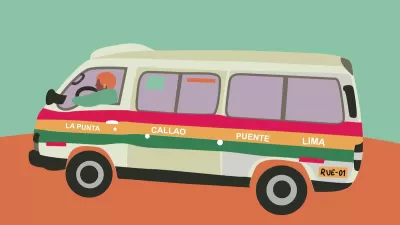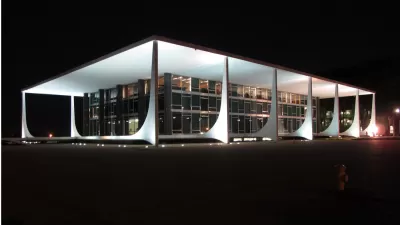This article from the Harvard Design Magazine looks at slums in Latin America and discusses the important role they play in their cities. Preserving the positive qualities of these communities is increasingly preferred over slum clearance.
"United Nations estimates suggest that nearly one billion people now live in slums worldwide- one-sixth of the planet's population. Without concerted action, the number is expected to double by 2030. Categorical terms like slum, however, can disguise significant cultural and economic distinctions among low-income settlements. Variously known as informal or non-formal cities, squatter settlements, or shantytowns, these communities differ dramatically in size, character, age, and level of political and social organization; they are found in both rural and urban areas, although they are increasingly associated with the world's largest cities, especially in Latin America, Africa, and Asia. Informal urban settlements appear in city centers and on their peripheries; they result both from traditional squatting and from a kind of 'pirate urbanism': they don't conform to zoning or service regulations and are enabled by bribes, populist governments, or property speculators who hope for eventual regularization and compensation for their investment. Notwithstanding their variations, however, these places share some characteristics: inadequate housing, insufficient living space, insecure land tenure, and lack of access to basic services, especially clean water and sanitation."
"In recent years, prevailing strategies for addressing non-formal settlements have shifted away from large-scale slum clearance and relocation, which have been demonstrated to cause massive social disruptions. The approach favored today is on-site upgrading and improvement, with the goal of integrating low-income communities into their larger urban contexts. There may be something inevitable about this: there are so many informal settlements around the world and many of them are so big and so old that it is becoming impractical to think of removing them entirely, especially since sufficient vacant land is scarce. Improving informal settlements, though more cumbersome and arguably more expensive than building right in the first place, has the advantage of leaving intact the economic and social networks that residents have created for themselves. As yet, however, there is no clear set of best practices for these upgrades, which range from small 'acupunctural' insertions to expansive infrastructural improvements, from familiar government-led programs to designer-initiated projects."
Thanks to Josh Stephens
FULL STORY: Improving Informal Settlements

Study: Maui’s Plan to Convert Vacation Rentals to Long-Term Housing Could Cause Nearly $1 Billion Economic Loss
The plan would reduce visitor accommodation by 25,% resulting in 1,900 jobs lost.

Alabama: Trump Terminates Settlements for Black Communities Harmed By Raw Sewage
Trump deemed the landmark civil rights agreement “illegal DEI and environmental justice policy.”

Why Should We Subsidize Public Transportation?
Many public transit agencies face financial stress due to rising costs, declining fare revenue, and declining subsidies. Transit advocates must provide a strong business case for increasing public transit funding.

Paris Bike Boom Leads to Steep Drop in Air Pollution
The French city’s air quality has improved dramatically in the past 20 years, coinciding with a growth in cycling.

Why Housing Costs More to Build in California Than in Texas
Hard costs like labor and materials combined with ‘soft’ costs such as permitting make building in the San Francisco Bay Area almost three times as costly as in Texas cities.

San Diego County Sees a Rise in Urban Coyotes
San Diego County experiences a rise in urban coyotes, as sightings become prevalent throughout its urban neighbourhoods and surrounding areas.
Urban Design for Planners 1: Software Tools
This six-course series explores essential urban design concepts using open source software and equips planners with the tools they need to participate fully in the urban design process.
Planning for Universal Design
Learn the tools for implementing Universal Design in planning regulations.
Smith Gee Studio
Alamo Area Metropolitan Planning Organization
City of Santa Clarita
Institute for Housing and Urban Development Studies (IHS)
City of Grandview
Harvard GSD Executive Education
Toledo-Lucas County Plan Commissions
Salt Lake City
NYU Wagner Graduate School of Public Service




























